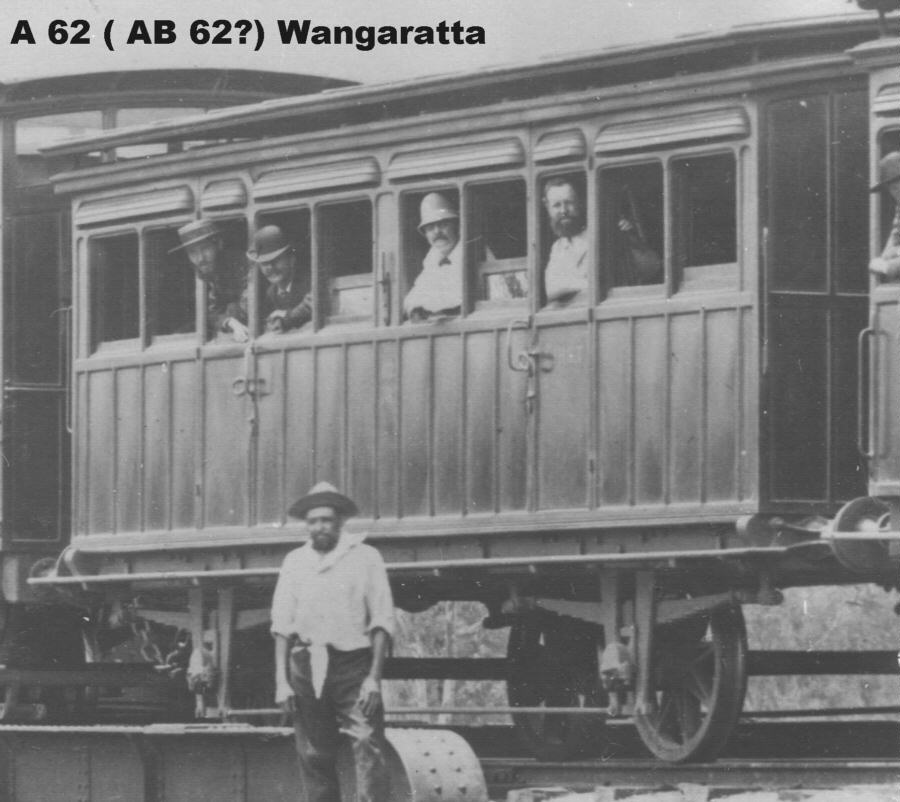

Fixed wheel passenger vehicles provided the backbone of both passenger and country trains until the late 1880's. The First Class fixed wheel carriages were coded "A". They were placed into traffic between 1859 and 1887. Though two cars were placed into service after this, one in about 1889 and one in 1893. The car numbers started at 1. The highest number recorded is A 274.
The original government railway cars were placed into service from 1859. In the late 1870's, the railways took control of several private rail systems. These systems were treated separately. Rolling stock was absorbed into a common pool of class lettering and numbers with the introduction of new Registers, started in 1886.
To 1886, the A carriage numbers were 1 - 160.
The cars in the number group 161 - 256 were renumbered from suitable carriages ex private railways. Some cars in this group, numbers 235 - 256 were built 1881 to 1883 when the government railway was in control.
Cars built in 1887 were numbered 257 - 274.
Most of the cars in the number block 161 - 256 have no information in regard to construction dates or builder. The writer believes there was a purpose for this: to clearly mark the vehicles as non-standard, ie non-government. From the records, it can clearly be seen there are three types of vehicles:
At the time, the original data was still available from the older reference book. These books have diasppeared over time. Both World Wars created material shortages and large paper drives were conducted. One can only assume they were thrown out.
The last A car built was A 4, in 1893. This later became a Vision Test car. The style of car is similar to the "Pioneer 1st" and "Pioneer 2nd" cars. Car A 4 was built three months after these bogie vehicles entered service.
With the introduction of more bogie cars in 1887, the fixed wheel cars were gradually replaced. The cars were cascaded down the line. First Class cars became Second Class, Second Class cars became Works sleepers or were scrapped. Opportunity was taken to downgrade the ex-private cars to Works sleepers or other conversions.
By 1910, there were only forty four A cars in service. These were reclassified to _X__.
There is an interesting photograph of the bogie First Class car "A 70" taken about 1874. From the Register viewings, I can deduce some points: